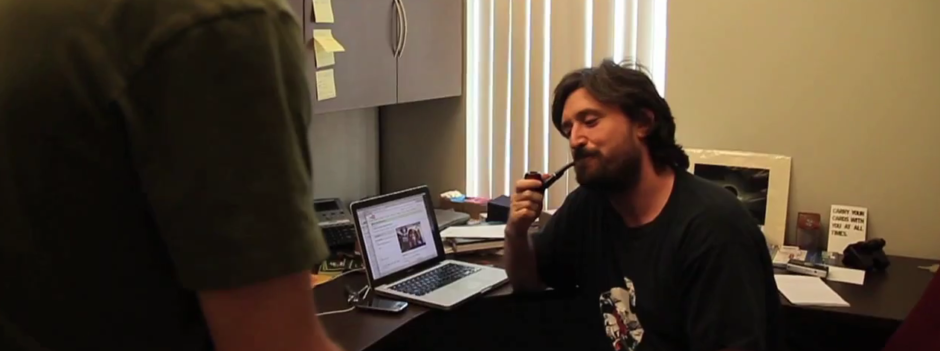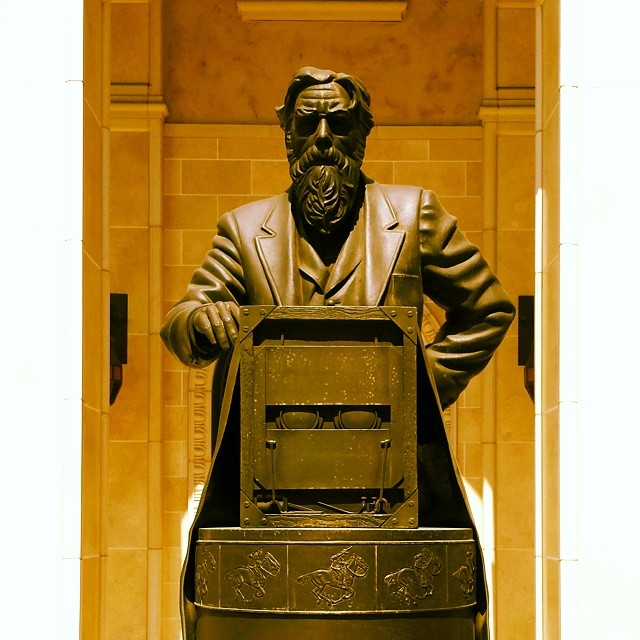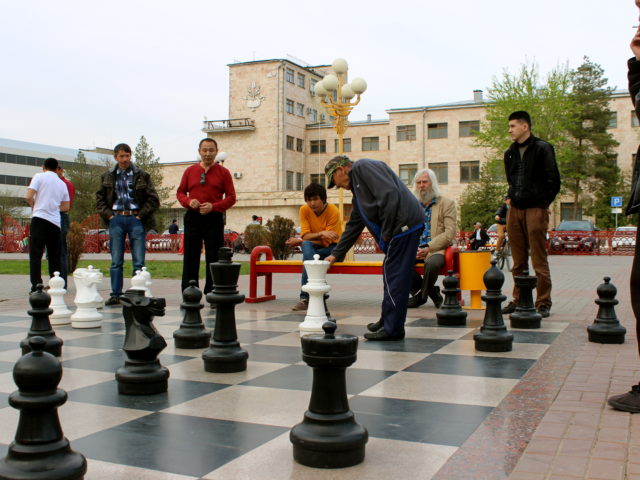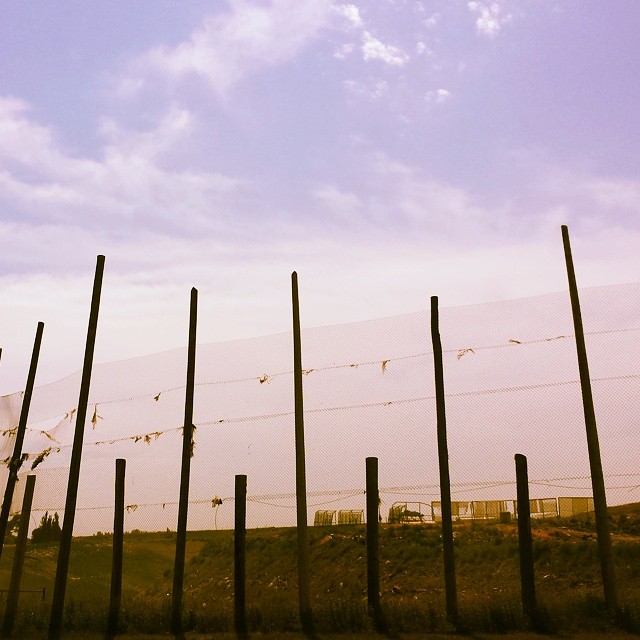About
Jeff Watson is an artist, designer, and Assistant Professor of Interactive Media and Games at the University of Southern California School of Cinematic Arts.
-
Silicon Valley Is Ruining Sharing for Everybody
“Brad Burnham, a partner at Union Square Ventures in New York, was one of the few panelists at the recent Share conference to dissent from the airy-fairy rhetoric there. ‘What we’re talking about is the natural tendency of capitalism to consistently find a more efficient way of delivering something,’ he says. ‘It’s information technology lowering transaction costs and revealing assets that can be utilized.’ If only the capitalists who run the companies, as opposed to the ones who finance them, were as clear-headed.”
– Noam Scheiber, Silicon Valley Is Ruining Sharing for Everybody
David Byrne’s “Report from LA” (1986)
There are so many movies coming out and David Byrne wants to see them all. His “Report from LA” (1986) somehow banishes easy irony and parody from a frantic recitation of (mostly) imaginary genre film titles, leaving us with something that’s weirdly transcendent.
The television production Two Moon July was a multidisciplinary event that featured experimental video, film, visual art, performance and music in a theatrical framework. More than thirty artists participated in the program, which was produced for the Kitchen by Carlota Schoolman and directed by Tom Bowes. This production reflects a moment when art centers were experimenting with new modes of presenting the arts for television. The participating artists read like a “who’s who” of 1980’s downtown art icons. Short excerpts from video and film works (by artists including Vito Acconci, Dara Birnbaum, Bruce Connor and Bill Viola) are intercut with performances and art installations in the Kitchen’s gallery spaces. Laurie Anderson performs Difficult Listening Hour, speaking through the male voice of her “Soul Doctor” character; Talking Heads’ front man David Byrne is featured in the performance piece Report from L.A.; choreographer and dancer Bill T. Jones performs Inspiration to the accompaniment of John and Evan Lurie’s music. Art works by ’80s art stars Cindy Sherman, Robert Longo and Jonathan Borofsky are integral to the mise en scene, while music by downtown legends Brian Eno, Philip Glass and Arto Lindsay, among others, provides a running soundtrack. (UbuWeb)
Posted in Blog
Tagged 1986, david byrne, los angeles, movies, performance art
Comments Off on David Byrne’s “Report from LA” (1986)
Kalmykia’s Alien Chessmaster’s Chess City
Games don’t need to be linked to an existing IP or storyworld to generate enthusiasm, excitement, and narrative. Indeed, they don’t need to start off with any kind of storyworld at all for players to engage with them, obsess about them, and tell stories about them. If they’re good enough, entire industries can pop up, theme parks will be built, and players will dwell on them even more than they will the latest theories about characters from Game of Thrones. Consider the contemporary world of chess, which includes things like a Russian dissident famous for representing humanity against the forces of artificial intelligence, a Kalmykian billionaire with ties to the Nazis who claims to have been abducted by aliens, and an international rivalry between superpowers. It even has its own city, the appropriately named Chess City:
Back in the days of the Silk Road caravans, this is what people might have called a mirage – a huge glass dome, surrounded by a California-style housing development, rising from the parched brown steppe. That shimmering vision has been brought to life here in Elista, the capital of the Russian republic of Kalmykia, a monument to the power of ego over nature, not to mention common sense and even reason. Its name is Chess City. Like a glassed-in Biosphere on Mars, the four-story dome encloses a cool, fresh world of carpets and comfort, of whispers and intense concentration, where the most brilliant minds of chess compete for diamond crowns. For miles around – in fact for almost all the rest of Kalmykia – 300,000 people live in poverty on the barren plains, where tank trucks deliver drinking water and where dried sheep dung, hoarded through the summer, fuels stoves in winter. (New York Times)
Chess City is one expression of how chess seeds the construction of its own strange world simply by being an interesting game to play. Like a sport, chess offers no storyworld to begin with; rather, it is through the play of the game and the accrual of narrative over time that it tells its tales and builds its monuments. This generative capacity is some of the most intriguing (and sometimes dangerous) black magic of game design.
DiGRA Talk: Drama, Narrative, and Sports
This talk presents an examination of hockey as it exists in early 21st century North America, paying particular attention to how narrative both emerges from, and is embedded within, the situations produced by the sport. Like all sports, hockey offers opportunities for individuals to take part in dramatic situations that would not otherwise occur. As players, teams, and fans actively engage with these situations, they produce various kinds of public and private narrative. These narratives in turn shape subsequent situations both within and beyond the formal boundaries of the sport. Through a series of examples from professional, amateur, and videogame versions of hockey, this talk examines how narrative emerges in, around, and among various contexts of hockey gameplay; how this narrative accrues and impacts both ludic and paraludic situations; and how it can become encoded in the formal structures of the game itself.
Talk delivered August 5, 2014 at DiGRA.
Paper forthcoming. Draft version available upon request.
Posted in Blog, Presentations
Tagged content generation, digra, drama, emergence, games, hockey, narrative, process intensity, sports
2 Comments
Charting culture
Skip to around 4:50 to see California’s magnetic pull — first centered on San Francisco, then on Los Angeles — as it draws migrants from the eastern seaboard as if they were iron filings.
This animation distils hundreds of years of culture into just five minutes. A team of historians and scientists wanted to map cultural mobility, so they tracked the births and deaths of notable individuals like David, King of Israel, and Leonardo da Vinci, from 600 BC to the present day. Using them as a proxy for skills and ideas, their map reveals intellectual hotspots and tracks how empires rise and crumble. The information comes from Freebase, a Google-owned database of well-known people and places, and other catalogues of notable individuals. (YouTube)
See also: original Nature news story, full paper in Science.








